Pro Bono in Japan
Warning: Use of undefined constant full - assumed 'full' (this will throw an Error in a future version of PHP) in /home/users/2/globalprobono/web/wp/wp-content/themes/GPB2018/single-post_interviews.php on line 48
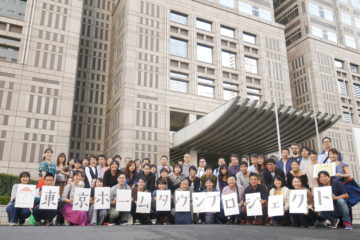
- GUESTS
-
Ikuma SAGA
Founder & CEO , Service Grant Japan
Japan - INTERVIEWER
- F. Tóth András
Volunteering in Hungary (ÖKA)
Hungary
an interview with Ikuma Saga, Founder and CEO of Service Grant Japan
In the Global Pro Bono Network there are many successful intermediary organizations led by great pro bono champions. These leaders have all very special stories on how they arrived to their position and have a very special insight on pro bono and its impact on civil society as they are in the forefront of pro bono development in their own country. Ikuma Saga is one of the most experienced players in the global pro bono field and definitely the first pro bono champion of Japan. I was so happy to have this conversation with him to learn more about his story, the work of Service Grant Japan (SGJ) and in general the state of pro bono in Japan.
András F. Tóth (AFT): Could you tell us about your background? How you landed in the pro bono field and became a pro bono champion in Japan?
Ikuma Saga (IS): It can be a long story. I used to work at a company called Japan Research Institute that is a private company in Japan, where I was a consultant. Our clients used to be both from the public and the private sector. I also had interest in grassroots, in people’s participation in society. Part of my job was a task to make a research about the non-profit sector for the central government. In 2004, I had the chance to visit the United States and some non-profit organizations there. When I visited one of the organizations, they were going to renew their website and recommended me to see the website when I get back to my hometown. And this website was done by Taproot Foundation so that was my first time hearing about Taproot Foundation, which I didn’t know quite well at that moment. When I came back to Japan I checked their website, searched the word ‘taproot’ and then I found the existence of pro bono. I was kind of shocked. During that time, I was working at a company but also was running another non-profit organization, which I set up with my friends. I had lot of difficulties in running a small organization in Japan. Also, I didn’t have any idea about volunteer by skills or expertise, so it was a very shocking moment and then I found the idea of pro bono fascinating. Later I made another visit to Taproot in San Francisco where I had a chance to talk with Aaron Hurst, who was the CEO at that time. Also, I had the chance to visit some internal kick-off meetings, visited beneficiary organizations in San Francisco and learnt about how pro bono was operating around that time. Basically, that was the first time I met pro bono and I felt it was a really sophisticated model. I hoped to have such support and system in Japan.
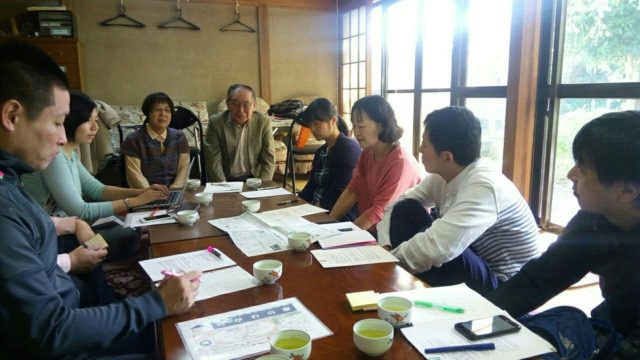
AFT: Then how did SGJ come out of this? You mentioned 2004 was your first visit which was quite long time ago.
IS: Yes, it was. I started writing an essay to a magazine in Japan, where I had a regular column, so I posted several reports about Taproot Foundation and its Service Grant program, which actually made me think about pro bono and motivated me to start in Japan. At the beginning of 2005, I started a small pilot project on my own, without any funding. This was an experiment of mine, calling for volunteers through the magazine and social media. I managed to gather about twenty people, who were interested in pro bono and I made up three teams to support three nonprofit organizations as a pilot. That was the beginning of SGJ. The three projects were about building websites. Two of them went very well but the third was full of disaster, with so many difficulties going around. First of all, the project manager left, without saying anything so it was a difficult time to wait for responses. Then, another member was so nice to substitute the position of project manager, but he worked too hard as to go too far from the realistic goal and the other team member could not follow him. Also the designer found her interest in a different goal other than the formerly agreed one, and she was totally absorbed in the other work without coming back to the team.
AFT: How did the organization come into existence? You said 2005 was the first project initiated by you and what happened next?
IS: Actually, the next step was three or four years later when I repeated pro bono projects quite informally. With my friends, I set up a small informal organization, Service Grant Tokyo. We did a lot of experimenting with lots of failures. After three years, at the end of 2008, I started a formal incorporated organization named Service Grant Japan (SGJ).
AFT: How the organization looks like now? What are the strengths and what kind of programs and services SGJ offers?
IS: Our organization is leading in the field of pro bono, as we have fifteen years of experience and we are one of the very first start-ups of pro bono organizations. Now, we have more than five thousand registered pro bono workers and have delivered over 840 NGO projects, so the size of our organization is one of our strength. Also, at the beginning, we only had a program for building websites but then we started a brochure, a sales sheet, and more and more. So now we have about twenty different deliverables. Also, in the beginning we had six-month-long projects and now we have like one day marathons and one- or two-month short term programs and then 3–6-month long term programs so there is a variety in the length of the programs as well.
AFT: How many colleagues do you have? Just to imagine the size.
IS: We have about fifteen full time and five part time colleagues. Five of them are in Osaka, the rest in Tokyo.
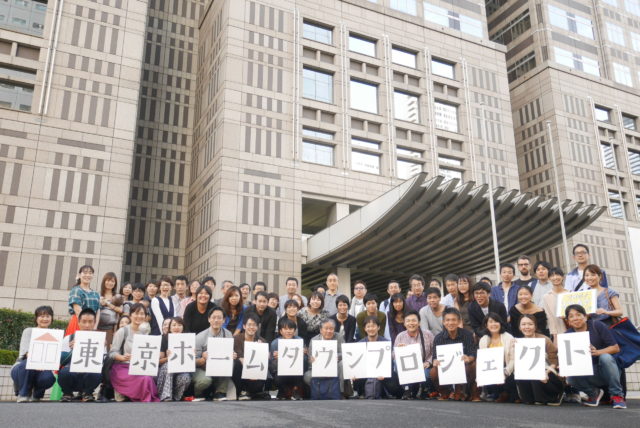
AFT: Do you mainly work through corporations or do you have other models as well?
IS: About 80% of pro bono workers are coming as individuals, so not through corporations. They are working for corporations but the company not necessary knows about their involvement. There are four different types of models in our operation. First one is totally nonprofit and non-funded. Then we have two types of corporation programs, one is when we work with CSR (Corporate Social Responsibility) department of corporations, who target fields, they have some kind of needs to deliver to the non-profit sector. The other one is when we offer HR programs to the HR departments. The last one is the government sector in which mainly ministries or prefectural governments offer pro bono programs in different fields.
AFT: What is the operation budget of SGJ?
IS: The budget size of SGJ in the last fiscal year was approximately 1,300,000 US Dollars or 1,100,000 Euro. This figure is much bigger than the former year when the budget was 700,000 US Dollars or 600,000 Euro.
AFT: Where do your incomes come from?
IS: About 70% of our income is coming from the government sector and 20–30% from the corporate sector.
AFT: What is the real strength of SGJ and where do you see it has the most impactful nowadays?
IS: Our system has good success ratio and stability. Still, we are keeping the bottom line that is important for the beneficiary organization.
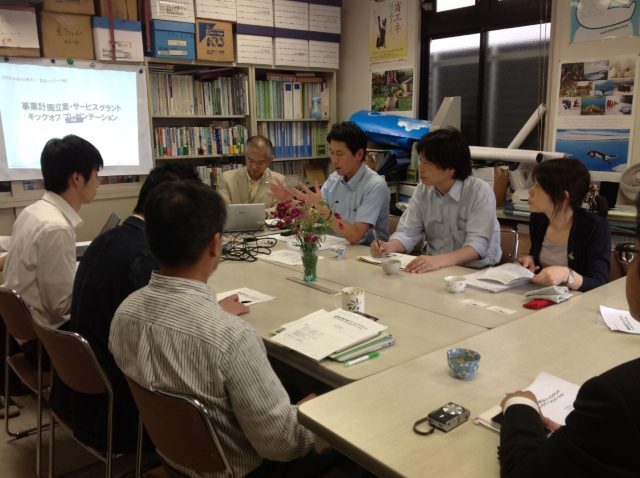
AFT: How does the pro bono landscape look like in Japan in general? (NGO needs, understanding and consciousness) Some of the mentioned data tells a lot, but it might be interesting to see how the bigger picture looks like. Could you share some other interesting facts about pro bono in Japan?
IS: Of course, when we started pro bono in Japan between 2005–2010, people did not know the concept of pro bono. I’d say the last ten years made a big difference. Nowadays, still around 10% of the public knows the idea of pro bono, which is a small number, but it used to be 0–1% so it is growing. Especially, around 2005–2010, people in their late twenties to early thirties were interested in pro bono. Now, people in their forties and fifties, the older generations are more interested in pro bono, so it is expanding. I’d say the landscape of pro bono is changing and spreading quite well. Actually, it is reflected in the increased number of pro bono workers. For example, in 2010 we had only around 700 people registered as pro bono worker and in one year it increased with 3–400 people. Last year, about 1000 people joined in one year so the speed is totally different.
AFT: And what about the NGOs? Are they ready and prepared the right scale and number?
IS: Of course, there are so many NGOs and NPOs and lot of potential needs for pro bono so I imagine if there is supply of pro bono many NGOs would like to receive it. Sometimes they are not ready so we should help improve their readiness but at least they have the need.
AFT: It is interesting to hear that the government sector is supporting you so heavily. Is it typical or is it your luck that you have such high government support? What is the attitude and the participation of the government in your story?
IS: This has something to do with the landscape. Nowadays, local or grassroot organizations have the biggest expectations in history about serving the society because the government is facing a huge challenge to serve the big needs. Especially, we have very rapidly aging population. The government is providing public health care services but it is reaching a limit because they cannot serve so many people on the same level. They are now promoting the prevention of elderly care, promoting health or mutual support in local communities, so this is the government’s strategy to lower social costs. NGOs have a lot of expectations from them actually.
AFT: Can we say that this is a progressive attitude and is more like an investment from governments towards social challenges?
IS: Yeah, I think so.
AFT: What about the companies? We are living in very different countries. In Hungary, for example, pro bono is almost 100% driven by corporations, especially multinational companies having offices here. What is the role of Japanese companies? Are they ready to commit and export the knowledge? How do you see their attitude and willingness to dive into this in Japan and maybe in other parts of the world as well?
IS: I’d say it is not like in the United States. Only a limited number of corporations are interested and willing to commit in the field of pro bono. Only a few corporations like Panasonic or Hitachi are quite interested in doing something. It is not very common for many companies to do this kind of social activities. This is the situation until now, still we have new inquiries from trading companies or the banking sector so now interest is gradually growing but we are still at the beginning of spreading pro bono in the corporate sector.
AFT: What do you think works really well in Japan in terms of pro bono engagements? What are the topics that could be beneficial for others? What are the best examples?
IS: This is not the only one, I believe. I cannot help but say that mamabono is working well. It is one of the successful models from Japan. About 50% of women quit their jobs and 20% take maternity leave. Out of them 80% have uncertainty and feel afraid and difficulties to come back to their jobs. Women have lot barriers in participating in society. And mamabono is a good place for them to demonstrate their ability and competence to better prepare for returning their jobs. Pro bono can also be a very good model for intergenerational exchange. Young pro bono workers in their twenties or thirties can be involved in helping community and neighborhood organizations where most of the staffs and participants are in their sixties, seventies or eighties. When they start pro bono work they do not necessarily know their communities but when they finish pro bono work they gain a lot of knowledge and experience about their communities. Also, they notice that aging population is not only the older people’s problem but has many things to do with their families or themselves, so they find connection between generations. This is also working well.
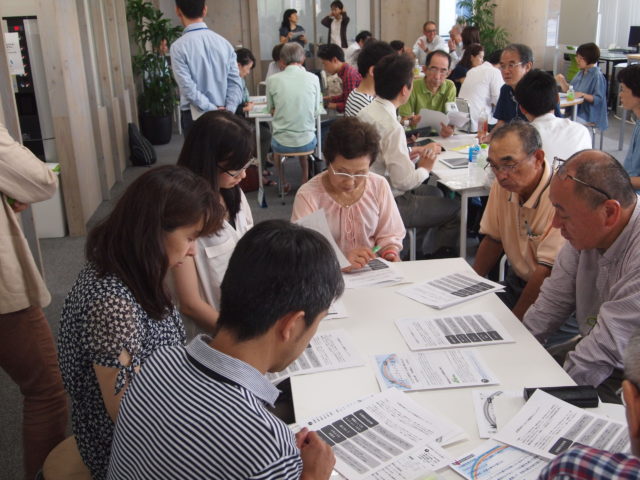
AFT: So there are a lot of pro bono projects related to aging society and intergeneration problems? Can you give an example?
IS: Yes, many pro bono programs are related to this topic. For example, there is a local organization in a small town whose leader is 86 years old. He is a strong man, very positive; people call him ‘super grandfather’. He set up a kind of prevention exercise class for the elderly people which is very popular. Also, local municipality trusts in this activity and asked him to start another class in the neighborhood areas so he would like to set up a new spot for this class but he is old and knows that he cannot manage everything by himself, so young pro bono workers interviewed him to help sort out and visualize all the different tasks he was doing in a chart, which was a lot by the way. They arranged and prioritized all the tasks he was doing then the ‘super grandfather’ noticed what were the tasks he should keep doing and what were others that he should be passed on to other people. Then, he found a new manager who is around 50 years old, so a relatively young person and his organization started to grow, having three branches in their town and the organization is getting more sustainable.
AFT: This is a very nice example. Does it mean that you support local governments as well or mainly NGOs with pro bono projects?
IS: I would say direct beneficiaries are NGOs or neighborhood associations or local informal groups, but by doing this we support local government in the end. We rarely support the government sector itself . Exceptionally, there are two or three projects to support local governments, but we don’t support them in Tokyo, we support them in the rural area, the countryside, where they cannot find pro bono workers easily.
AFT: You mentioned that there are around twenty different deliverables SFJ provides. Could you list the top three pro bono areas nowadays in Japan?
IS: There are four different fields and twenty different deliverables. The first one of the four types is information or marketing including websites or brochures. The second one is fundraising with sales sheet and donation management. The third one is about operation, creating manuals, workflows or IT and cloud tools. The fourth one is strategy planning, like strategic planning or making marketing research. The most popular is obviously the first one.
AFT: What is the biggest lesson you have learnt throughout all these years? What advice would you give to new intermediary organizations?
IS: I think the expectations of nonprofit sector and that of pro bono workers should be at the same level. Pro bono work is interesting, and people can get heated up quite easily because it is fun. It is not like a job where you have a boss who assigns you tasks but you are doing what you like so everything is quite positive. You can sometimes heat up easily and sometimes too much. People can run too fast or too far. Sometimes if you let them do what they want to do, they can fail. You should sometimes stop them or calm them down or be a “pace maker” to save their energy to reach the goal. If you run too fast you may use all your energy before reaching the end goal or if you follow a different direction you might lose sight of the goal. This is the most important thing, especially for intermediaries, to do as you cannot teach them but you can guide them.
AFT: Does it mean that you are guiding and having an eye on all the projects you are managing?
IS: Yes.
AFT: Is it a personal participation or is there a work-tool you created?
IS: When I started as a pro bono intermediary, I often went to the site, where I joined the interview of the stakeholders, team meetings, which was a great learning for me. Learnt a lot about nonprofit sector and about social problems. It is a privilege for intermediates to go to so many NGOs. Unless you have enough knowledge you must go to the real sites, you cannot do this from the office but through real experience.
AFT: Any other advice you’d give, not only to beginners but anyone working in this area?
IS: Try to be innovative! I try not to stick to the same things. People, societies are rapidly changing so I always look for what can be renewed or refreshed. As a leader of an intermediary organization, I try to keep improving errors and mistakes, destroying creatively, and give stimulation to current situation.
AFT: How many projects do you have annually?
IS: Last year we had 160 projects.
AFT: Do you have a love project that you won’t forget?
IS: My love project is from the very beginning when my organization was small and I did not have much experience in social organizations yet. In one of the first projects, I supported an organization which provided service to play with children in hospitals. It is a kind of shame but when I first saw what they did, I thought it was just about people having fun with playing and I didn’t notice their significance. But then I learnt how important it is to play with kids, how good it is for the kids, as well as for parents, doctors and nurses, also for parents. This is a good chance for citizens to support hospitals. I used to think that hospitals are run by doctors and nurses but seeing this voluntary group of people playing with children was realizing a new model to support hospitals exists. I noticed the significance of this activity because this might seem easy but it actually has a very heavy meaning. I still remember this project very well.
AFT: Is there any new plan you’d like to accomplish in the coming years?
IS: Just like at Taproot Foundation I’m looking forward how we can be enablers of pro bono in Japan. About 5–6 years ago we started a program named pro bono academy to offer lectures to local intermediary organizations on how to operate pro bono. In general, it seems okay but not necessarily working very well, as local intermediaries have their own structures, ways of thinking and behaviors that are so different. Transferring knowledge is difficult, so now we are thinking about two different approaches for enabler strategies. One is making an online pro bono platform, which is like Taproot Plus. We make it ourselves to support the huge demand of pro bono needs and supplies and hopefully it will be available by the end of summer 2019. The other one is what we call the Pro Bono League, which is a kind of pro bono platform for local companies, local governments and local non-profit organizations to collaborate in local matters. Mainly, we work in Tokyo and Osaka, but there are so many needs in the other parts of Japan so it’d be great if we could set up network of people who support operation of Pro Bono League. However, this is still in experimental phase. We’d like to propose some local governments and corporations to try to start this new type of model.
AFT: Are there many other pro bono intermediaries in Japan?
IS: There are some but not many. Intermediaries I mentioned are usually nonprofit supporting organizations.
AFT: Is SGJ unique organization in Japan?
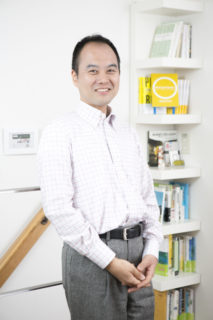 IS: It is not the only one. There are about five other similar organizations. Of course, the size, the concept and the way they are operating is different.
IS: It is not the only one. There are about five other similar organizations. Of course, the size, the concept and the way they are operating is different.
AFT: Is there any cooperation among these five organizations?
IS: Yes, we have regular meetings in every 3–4 months.
AFT: Thank you for the rich conversation and all the interesting insights.
IS: Thank you for the initiative and the interest.
Interview recorded by András F. Tóth on 18 / 06 / 2019




